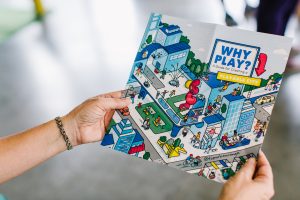
While in architecture school I became extremely interested in activating underutilized spaces through small scale urban interventions. Shortly after implementing some of these activations I began to see the impact play had on not only activating spaces but also bringing people together within these spaces. When implementing these interventions there were several key moments when I witnessed barriers breaking down and people that might have never engaged with one another began to come together around the work – like a homeless man engaging with a middle-class family over a giant 12ft beach ball in an abandoned lot. After witnessing these types of moments, I became infatuated with the power of play. I began to study and learn about the importance of play and wanted to figure out a way to begin to implement it as a part of our everyday infrastructure. This led me to leave the traditional architecture profession and start my own multidisciplinary design firm called The Urban Conga. Our work focuses on promoting community activity and social interaction through open ended play for all demographics. We achieve this by creating interactive installations and environments that spark creativity, exploration, and free-choice learning into the built environment.
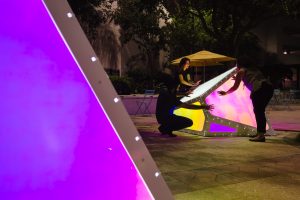
Right before I got selected for CPI, I was actually about to stop doing the work I was doing and close up my firm The Urban Conga. I had lost touch with why I started doing this type of work in the first place, because it had become primely focused around making money to support myself, my employees, and the next project. While attending the initial CPI workshop in Bristol I was able to reconnect with the excitement of why I started doing this work and began to focus on the impact and values that play brings to the built environment. I was given the chance in this program to step away for the first time and be around likeminded people struggling with the same internal battles. Being given the chance to be a part of a family of people who would support and also criticise one’s work allowed me to connect back with why I originally became interested in this work in the first place. I began to look at how I could begin to track this and what exactly I should be tracking. Several of my colleagues’ work in the CPI program became a massive influence on how and why this analysis of the work is important. Specifically, Leticia’s work in Mexico City on collecting qualitative and quantitative data gave me insight into how and why for me to start looking at my work in this way. This sparked me to not get frustrated with people’s misunderstandings of a playable city, but to figure out a way to help people better understand plays value and impact within the built environment. I needed to go back to my roots and begin to understand the value and impact that play has on our built environment – and to begin to express this through both qualitative and quantitative data to help not only validate this type of work to stakeholders but to help me personally reconnect with impact, rather than only focussing on the end product. This has allowed me to look at the work in a broader context and think about how this work of implementing play into everyday spaces can begin to really impact city change.
I knew that if I just gathered this information for personal reasons it wouldn’t do any good, but instead I needed to create something that could be shared to help spark conversation and further exploration of the true value of play. A way of expressing the importance of “A Playable City” and why as architects, urban planners, city officials, developers they should be focusing more on this idea of implementing play into everyday spaces. I needed to create something that would begin to encourage people to think about these spaces that could become PLAYces: like a crosswalk, park bench, building facade, sidewalk, bus stop, or just the everyday space in-between. How these often once boring or underutilized situations can turn into stimulating, creative outlets for social interaction and community activity through this idea of open-ended play. I began to explore the idea of creating “A Guide for Creating a Playable City”, something that focused on trending values of cities and the impact that play had on these through both qualitative and quantitative examples of data from different scaled playable interventions as well as looking at how to track and look at the impact of play. The guide is designed for municipalities, city officials, city stakeholders, but also architects, planners, creatives, institution, and just community advocates looking at creating better places for people. The guide is set up to dissect how play impacts four major trending values in cities such as Economic value, Social value, Health, and Identity. In no way is the guide the only way to do or look at play within the urban infrastructure, but instead a starting point for conversation. My hopes are that this is just the beginning and that this guide can be manipulated, criticized, and further developed by an on-going further conversation and look into the importance of play within our everyday built environment.
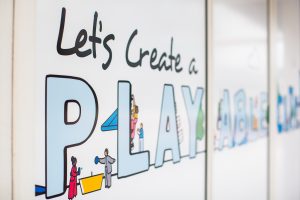
I knew that putting this guide together would not be an easy task. That there was not a lot of resources for data of interactive and playful urban interventions around the world. This was mostly caused by a lack of funding to do so. I also knew that there simply wasn’t a lot of people doing this work in the sort of defined way I was thinking. I was consistently met with resistance from artists wanting to label their work as playable and wanting nothing to do with play. Even though their work was centered around playable interactions, the word play has a negative connotation attached to it. People think one’s work is just geared towards youth when they hear the word play, and this is something I myself have to constantly battle when talking about our work. But, this is simply because as we get older we see play as a distraction of something not needed rather than an additive of something that is essential. This helped me to realize that part of this guide’s job was to disrupt the norm and begin to spark conversations and educate people of the values and impact around play, and reinforce the idea that it shouldn’t be something associated directly with children and playgrounds but instead looked at as an asset for all people.
The next wall I ran into when trying to gather this data was trying to get city officials and municipalities to be truthful when dissecting the values they and the city as a whole were focused on. At first, I tried to do this through inviting them to join a panel discussion that would investigate this and allow them to be in a space that they could share. I quickly realized people were only focusing on the positives and were editing their true feelings. I wasn’t getting the ugly truths of the city that I had heard in one on one conversations. So, I thought creating a digital survey would be a better way to collect this information. However, I soon realized how hard it was to get people to actually fill this out. We sent out about 1,000 surveys to city officials, municipalities, city stakeholders around the world and only received back a little over 100. So, in order to find the common values and trends cities were focused on in terms of urban development, we needed to tap into resources and statistics that already existed on the internet and compare them to our collected feedback. I also had a number of sit-down meetings and discussions with people during my travels for talks and workshops around the world that I would note and record. There were direct comparisons that allowed us to figure out four common values to focus on. We also kept these very broad to allow them to be manipulated and critiqued by the public.
This journey helped the guide become more of a conversation starter about playable cities and less of a direct step by step approach to creating them.
It’s really just made me see that a lot of people are thinking and pushing this idea of a playable city but there is a strong lack of structure and understanding around it. That it consistently got caught in the arms of placemaking, but it was something extremely different and more powerful. This journey of creating this guide and looking at data around the work has shown me that something needs to just exist to get the conversation of Playable cities and what that could begin to look and feel like in a broad sense that could translate to different contexts and cultures around the world. Play is something very universal that anyone can grasp, but a lot of people just don’t value. So, the hope is that we can start to value it more when it comes to the development of our urban infrastructure.
Collecting this data has also led to us being able to prove the success of some of our projects when certain clients maybe didn’t see the impact at first.
To showcase this research and the guide we launched a three-week exhibition titled “Lets create a Playable City” in Clearwater, FL. The idea was to share the information we created in the guide through creating an immersive and interactive space that allowed visitors of the public to learn and understand the values of play as well as give them a chance to create their own ideas for a playable city. These ideas were shared with city officials and municipalities of the City of Clearwater through an intensive three-day workshop run with Anel Moldakhmetova and Leticia Lozano, two fellow colleagues of CPI. The city became so inspired by the ideas and vision of a “Playable City” that they came up with a playable agenda that will start next year. The hope is that we can travel and set up this exhibition in other cities in the hopes to inspire more conversations around implementing open ended play within the urban infrastructure. More on the exhibition can be seen here: https://vimeo.com/372488965
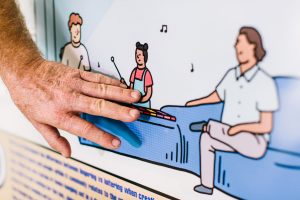
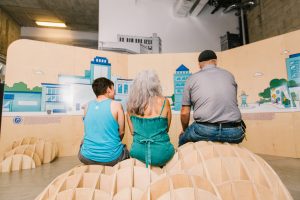
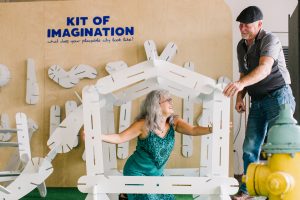
I learned so much from everyone in the cohort. The biggest impact was the support system that was developed. Even though we were all doing somewhat very different ways of producing we were all going through the same issues. Just having this community of people that allowed you to be vulnerable and were supportive and understanding made it so much easier to do the work I’m doing. Don’t get me wrong I have an amazing support system of people encouraging the work I am doing, but sometimes it is hard to get people to relate and understand the struggles. The CPI family has filled that void in so many ways.
CPI helped me better understand the idea of a playable city in a world-wide context and how to develop ideas that can be adapted into these contexts. My knowledge of public spaces in different parts of the world was very limited and confined to readings and social media before the introduction to this program. Where now I’ve been given opportunities to travel all over the world and explore these contexts and better understand them through conversations and workshops with CPI members, communities, municipalities, and city stakeholders all over. I would say it’s allowed my thought process for impact and value within the public space to evolve. To begin to think about common trends that can relate to many contexts.
You can read and download A Guide for Playable Cities here.
